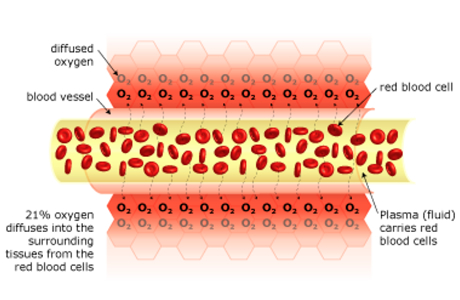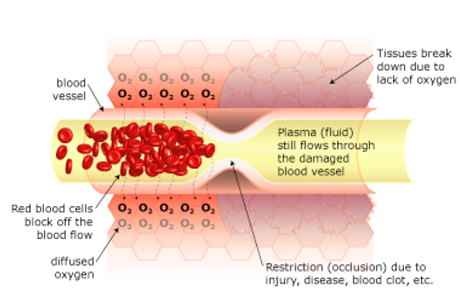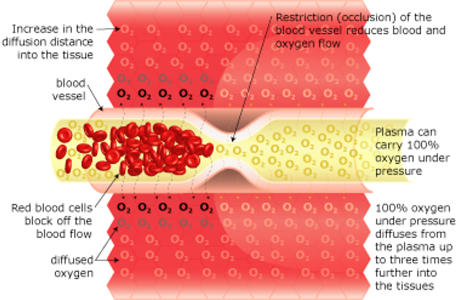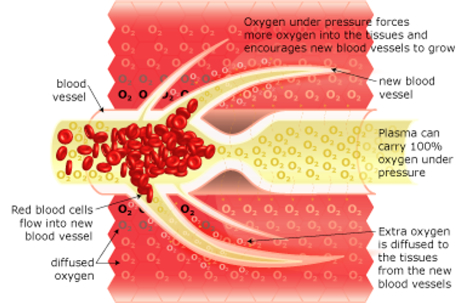Under normal circumstances, oxygen is transported throughout the body only by red blood cells. With HBOT, oxygen is dissolved into all of the body's fluids, including the blood plasma and lymph.
Then it can be carried to areas where circulation is diminished or blocked.
The increased concentration means that the gradient for the transport of free oxygen from blood into the tissues is increased at least 10 fold.
In this way, extra oxygen can reach damaged tissues and the body can support its own healing process.
The increased oxygen also greatly enhances the ability of white blood cells to kill bacteria, reduces swelling and allows new blood vessels to grow more rapidly into the affected areas.
It is a simple, non-invasive and painless treatment.
The sequence below explains the process:
1. Normal Blood Flow
There is 20% oxygen in the air that we breathe, and our lungs transfer this oxygen to our red blood cells via haemoglobin.
These oxygen-filled red blood cells are carried around the body by the plasma fluid, which travels through the blood vessels.
The oxygen diffuses into the surrounding tissue ensuring that it is delivered to where it is needed most.
2. Restricted Blood Flow
When there is a restriction in blood flow due to surgery, illness, or injury, the red blood cells block the blood vessel and are unable to transfer oxygen to the cells on the other side of the occlusion.
This can cause swelling, reduces blood flow and starves the area of oxygen. When this occurs the tissue, cells and organs begin to break down, degenerate and die. This is what causes problem wounds, diabetic foot problems and the long term tissue damage with radiation treatment.
3. Hyperbaric Oxygenation
Breathing 100% oxygen under pressure causes the oxygen to diffuse into the blood plasma. This, now oxygen-rich plasma is able to travel past the restriction, diffusing many times further into the tissue.
The pressurised environment helps to reduce swelling and discomfort, while providing the body with at least 10 times its normal supply of oxygen to help repair tissue damaged by the original occlusion caused by your medical condition.
4. Blood Vessel Regeneration (Angiogenesis)
HBOT also forces more oxygen into the tissue, encouraging the formation of new blood vessels.
As these new blood vessels develop, the red blood cells start to flow, delivering even more oxygen to the affected area.
This creates the best environment for the body’s natural healing processes to repair damaged tissue. HBOT has the potential to effectively resolve tissue, cells and organ function as well as reducing rehabilitation time.




